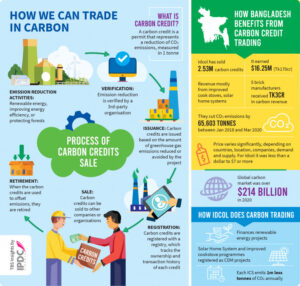Buy Trade Carbon Credits
Carbon credit prices have been surging on a global market where companies are looking to offset their emissions or hedge against the costs of transitioning to a lower-carbon economy. The industry has attracted investors like technology companies, airlines, oil and gas majors and finance houses. The soaring prices have been fueled by the fact that many companies are years away from making significant reductions in their carbon footprint. That is why they turn to the carbon credit markets to help them meet their regulatory targets, while generating a new revenue stream.
The trade carbon credits market is two-fold: the compliance market and the voluntary market. In the compliance market, governments set a limit on emissions and then offer companies that emit more than that amount a chance to purchase credits from other companies in order to stay under their cap. These credits are typically created through forestry and agricultural practices, but could be generated by any project that reduces, avoids or destroys greenhouse gases (GHG).

The middlemen in the transaction — who can be financial institutions or individuals — make a profit off the sale. For example, the owner of a forest that has been certified as having reduced carbon levels will receive money from the company that buys the credits to offset their own GHGs, and in some cases there may be additional “co-benefits” from the project such as improved water quality or economic development.
Why Do Companies Buy Trade Carbon Credits?
Most of the carbon credits that trade in the compliance market are issued by state and federal programs, but there are also global initiatives such as the Kyoto Protocol, a voluntary system where countries that meet their emission targets can sell their surplus credits to those that don’t. The voluntary market is largely unregulated, though there are a number of respected standards organizations that validate carbon credits in the sector. For example, the Verra Group, a Washington, D.C.-based nonprofit founded in 2007 by environmental and business leaders to improve the quality of carbon offsets, sets one of the most widely used validation standards.
In the voluntary market, the main buyers of carbon credits are large companies wishing to offset their emissions or mitigate the impact of their activities on climate change. This includes some of the world’s largest tech companies, such as Apple and Google, as well as airlines and oil and gas majors. In addition to reducing GHGs, some projects that generate carbon credits have been shown to deliver additional social and environmental benefits in line with the United Nations Sustainable Development Goals.
A growing number of companies, especially those involved in the transportation and energy sectors, are aiming for net-zero goals by 2050. While that goal will be hard to achieve without a massive shift to renewables, the carbon credit market is helping companies bridge that gap. As a result, demand for these credits is expected to remain strong in the future. Whether it is a way to reduce their own GHGs or an opportunity to hedge against the costs of a shift to a low-carbon economy, carbon credits will likely continue to play an important role in enabling companies to meet their targets.